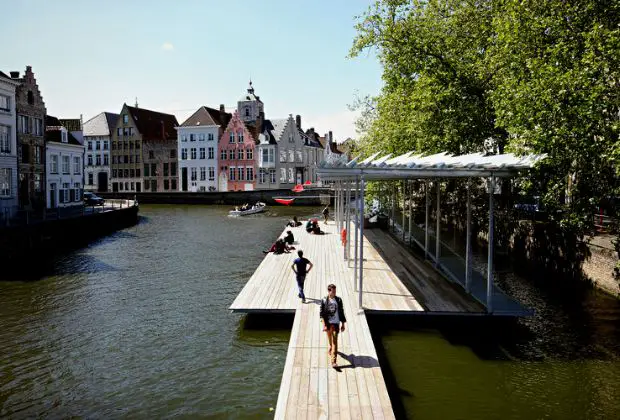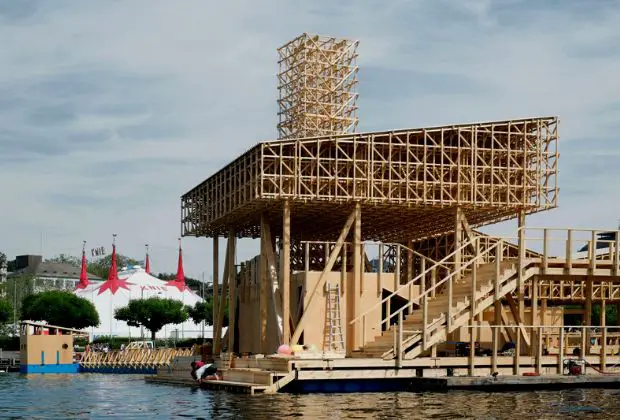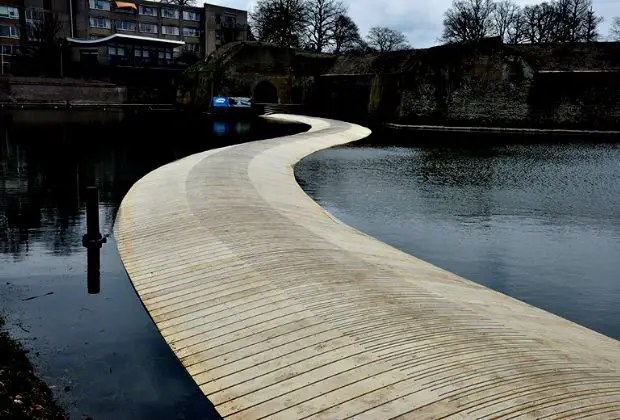What is a Floating Building?
A floating building is a structure constructed using a floatation system at its foundtion. These buildings can be only transported to their desired location by ships, as these floating buildings cannot operate under their own control.
Floating buildings are quite different from traditional structures as these are built on water using a floating system, while traditional structures are built on solid ground using standard foundations. As modern technology is advancing, floating buildings are in great demand.
Principle of Floating Buildings
The principle of floating buildings is based on the buoyancy system which was proposed by Archimedes. In this, there is no requirement of solid ground to transfer dead and live loads of structure.
But the base of the structure must be constructed in that it assists in floating and transferring dead and live loads of the structure to the water with a displacement of water that creates the buoyancy force needed to carry the building load.
The floating buildings appear to be the setting for an imaginative science-fiction film. In actuality, floating buildings and floating architecture are growing and becoming increasingly popular across the globe. Yet, a large number of homeowners are interested in knowing the pros and cons of floating buildings.
So below we have mentioned some of the pros and cons of floating buildings.
Pros and Cons of Floating Building
Pros of Floating Buildings
Following are the advantages of floating buildings:
- Floating buildings can be constructed in a short duration.
- Less Disturbance in Ecosystem
- It helps in forest and animal conservation.
- Increase in open space in cities.
- Resiliency to a natural disaster.
- Easy transportation of buildings.
- Floating buildings don’t need landfill space.
- Floating buildings can reduce deforestation.
- Increase in the growth of trees and plants.
Cons of Floating Building
Following are the disadvantages of floating buildings:
- Not suitable for areas with frequent climate changes.
- More maintenance is needed.
- It does not last for a longer period.
- Floating buildings can affect the lives of aquatic animals.
- Floating buildings pose a high risk of water pollution.
Top 10 Floating Buildings in the World
Following are the 10 best floating architecture examples:
1. Floating School in Makoko / NLÉ Architects

2. Jellyfish Barge / Studiomobile

3. The Hasle Harbour Bath / White

4. Canal Swimming Club / Atelier Bow-Wow + Architectuuratelier Dertien 12

5. Pavilion of Reflections / Studio Tom Emerson

6. Dutch Floating Bridge / RO&AD Architecten

7. Floating Piers / Christo & Jeanne-Claude

8. DD16 / BIO-architects

9. DOC – Temporary Floating House / Lime Studio

10. Floating House / Friday SA


